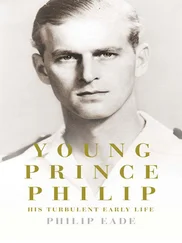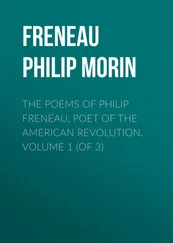Although Ivan’s motives in fighting the Knights of Livonia were in part religious, they were chiefly economic and strategic. With its expanding connections with the rest of Europe, Moscow recognized the advantages that would flow from having direct access to the Baltic and through the Baltic to the West. It was also beginning to realize that there was more profit to be made from trading with the West directly rather than through intermediaries like the Hansa. Such considerations figured in Ivan’s decision in 1492 to build a fort (which he called Ivan’s town, Ivangorod) opposite Narva, on the left bank of the river that flowed north from his loyal city of Pskov into the Baltic, and to close down the Hansa’s operation in Novgorod. Here was the genesis of both Russia’s search for ‘a window on the West’ and its struggle to come to terms with the nascent world economy.
War with the Knights continued intermittently from 1490 to 1510. It resumed after an interval in 1501 at the Knights’ initiative. They were able to field 2,000 German mercenaries — both cavalry and men-at-arms — in addition to their own numbers, and had a commitment from Alexander of Lithuania, brother of King Casimir of Poland, with whom they had signed an offensive alliance. Hostilities began with the Knights marching on Izborsk and winning a victory against such Muscovite troops as could be mustered. But then Alexander was diverted by the death of his brother, King Casimir, and the need to secure his crown. In the event, the Knights, under their Master, Walter von Plettenberg, had to fight on without him. Then a force of Russians arrived, and between them the two armies devastated the country.
Perhaps because of the crusading spirit, wars on this front had long been fought in a vicious manner. In the 1470s, for example, the Knights had burned Kobyle on the east shore of Lake Peipus, together with 3,985 people. On this occasion Moscow sent in a force of Tatars and a new terror weapon, 1,600 dogs (the memory of which may have inspired Shakespeare’s reference a century later to letting loose the dogs of war). The Knights retaliated by attacking Pskov, where both sides fought each other to a standstill. In 1502 the Livonian war was subsumed into a larger conflict between Muscovy and Poland-Lithuania, and in 1503 Ivan and von Plettenberg concluded a peace at Pskov. 29
The Knights had repeatedly asked Rome to endorse their crusade against the Orthodox Russians, but the Pope was more concerned with the Turkish threat and anxious, if he could, to enlist Ivan’s support against it. But Poland-Lithuania was soon taking up the cry. By 1515 its king was assuring the Pope that the Grand Prince of Moscow was ‘a Sarmatian Asiatic-tyrant, a blasphemer and schismatic’ bent on ‘the downfall of the Roman Church’. 30Certainly the war inspired the publication of the first of a long series of German flysheets (Flugschriften) proclaiming anti-Russian sentiments in increasingly vitriolic terms. Cold War rhetoric was of ancient provenance, and had its beginning here, in Russia’s first imperialist push towards the west. 31
Despite the Polish king’s aspersions, Muscovy no longer humbled itself before the Asiatic Tatars. Indeed, it now sought to subdue them, but its face was already turned Janus-like towards the West as well. Greeks and Germans had been recruited for Ivan’s service, and he seems to have now exploited contacts with the Byzantine emigres in Italy to bring Italians with modern skills to Moscow. They included the architect Pietro Antonio Solari of Milan, who designed the new Saviour Gate to the Kremlin and the magnificent reception hall known as the Hall of Facets, and the brilliant engineer, coiner and Renaissance jack of many trades Aristotele Fioravanti of Ferrara.
Meanwhile, although the Church had been uneasy about Ivan’s second marriage and his association with Rome, with the Latins and the ways of the Latins, the Grand Prince had had his way. But tensions had continued to simmer under the surface, and now they erupted. It was whispered that there was a conspiracy to undermine the purity of Russians’ Orthodox faith, and that several prominent figures very close to the Grand Prince were part of it. So was Metropolitan Zosimus. These were the so-called ‘Judaizers’.
There was nothing Jewish about them. ‘Judaizer’ was simply a term of ideological abuse, like ‘Trotskyist’ in the 1930s. To label one’s enemies as heretics was to establish a correct political line, and, as in the 1930s, this process was associated with purges. The nearest the Judaizers came to the heresy they were accused of was, perhaps, to borrow a form of rationalism from humanists in the West, but the controversy was strongly informed by political interest. Ivan himself seems to have been attracted by one aspect of the so-called heresy, because it opened up the possibility of secularizing church lands, 32which, as we have seen in regard to the Novgorod appropriations, he was anxious to do. Like Henry VIII of England, who presided over the dissolution of the monasteries, Ivan was anxious to place the Church’s assets at the disposal of the state.
The purgers’ first target, however, was Metropolitan Zosimus. Zosimus’s public reference to Ivan as ‘the new Emperor Constantine of the new Constantinople — Moscow’ had justified the confidence which had Ivan to appoint him. 33Yet such was the current extent of feeling against Zosimus that the Grand Prince, ever the sensitive politician, allowed him to be sacrificed. Zosimus was ousted in 1496, and was subsequently relegated in official church history to the status of ‘a wicked heretic’ for his alleged ‘Judaizing’. 34But that was not the end of it. Fingers pointed to several other important figures close to the Grand Prince — to Fedor Kuritsyn, one of Ivan’s leading diplomats and foreign-policy advisers; to the Greek Trakhaniot brothers; even to the Grand Princess Sofia. She had, after all, been a Uniate and a ward of the Pope. Ivan protected them, at least for a time.
In 1497 Ivan presided over a council of bishops and officials which issued a law book (Sudebnik) , but this civil triumph was soon overshadowed by palace conspiracies. In a dramatic turn of events, the Grand Prince’s eldest surviving son, Prince Vasilii, was disgraced and disinherited. The following year Ivan invested his grandson Dmitrii, who was only a few years younger than the disinherited Vasilii, as his co-ruler and heir. Vasilii’s supporters tried to organize a coup d’état, but were discovered and executed. At issue was more than the question of which of the Grand Princes progeny should succeed him when he died; related developments suggest that policy was also at stake. The Trakhaniots fell out of favour and Sofia herself, who was implicated in the coup, fell under a cloud. So did Ivan’s personal secretary, Ivan Volk Kuritsyn, whose brother Fedor may have served the opposition as a surrogate and scapegoat for the Grand Prince himself.
Kuritsyn was a nickname, meaning ‘hen’, perhaps because the family’s heraldic sign was a cockerel. The Kuritsyns had aristocratic connections, and formed a veritable dynasty of top officials. Ivan Volk had led a 1492 embassy to the West, which had provided a mass of invaluable information on European affairs; he was associated with the Grand Prince’s centralizing policies, and had served as the senior civil official on the Novgorod campaign of 1495. Clearly he had a great many enemies. He was hated by those who had lost hereditary family privileges and property through the Grand Prince’s policies, by the losers in the succession crises of the 1490s, and by those who were disturbed by the importation of foreigners and foreign things.
In 1499 the disinherited Vasilii was suddenly back in favour, though not reinstated as co-ruler, but the Kremlin remained in the grip of intrigue. In 1500 Vasilii raised an armed rebellion against his father, but then came to some accommodation with him and submitted. In 1502 Ivan had Vasilii’s rival, Dmitrii, arrested and accused of impertinence. Disobedience and even disappointment received short shrift at the hands of an old and probably ailing ruler determined to keep control. But Ivan had to contend with fierce resentment on the part of the disinherited, and from conservatives who feared the modernization implied by the dawning age of absolutism. Ivan’s secretary, Ivan Volk Kuritsyn, became a lightning rod for all their hatred and resentment. Even the Grand Prince, by then well into his last illness, could not save him, and so, in 1504, Ivan Volk was burned alive in a cage as a Judaizer. 35The Grand Prince himself, whom his secretary had served so well, died a year later. Their work, however, was preserved. Ivan III had presided over a revolution of a kind, and every revolution has its victims.
Читать дальше





![Stephan Orth - Behind Putin's Curtain - Friendships and Misadventures Inside Russia [aka Couchsurfing in Russia]](/books/415210/stephan-orth-behind-putin-s-curtain-friendships-a-thumb.webp)





